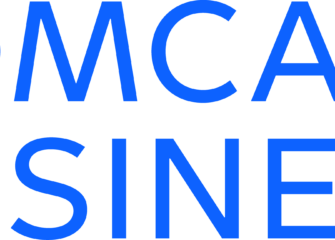
How can I remain home safely and comfortably for as long as
possible? This popular question is puzzling smart retirees, concerned families, community
organizations, academics and others. Three local entities are getting answers “straight from the
horse’s mouth” via private conversations in September. It’s all part of a matchmaking process
across all generations or neighbors helping neighbors to safely stay together in the old
neighborhood.
MAC INC, the Area Agency on Aging for the Lower Eastern Shore, the Women’s Fund
at CFES and Salisbury University students in Dr. Whitehead’s Social Psychology class are
partnering to conduct a door-to-door survey between September 4th and September 26th. It’s all
part of a feasibility study to determine what is really needed by our seniors to avoid a premature
move from their current home because some critical support for their health or overall wellbeing
is missing.
In at least 30 other Maryland communities, seniors are living longer and stronger in their
own homes because they are exchanging needed support with one another. Some are calling
these operations time banks and others are calling them village co-ops. Typically a non-profit
organization like MAC INC assigns full time staff to manage the day to day operations of the co-
ops and time banks. While the offerings vary, their success is linked to a good understanding of
what seniors need and what they are able to offer in return for services. The survey is designed
to improve our understanding of needs and offerings.
Dr. Renée S. Fredericksen, Special Projects Director for MAC INC, describes the co-op
or time bank concepts in this way, “It’s like the old food co-ops and child care time banks I used
in the 1970’s as a young working mother. We each had a small garden. We’d take our produce to
the co-op market each week – a bag of potatoes, jars of jam, home-made soaps etc. We’d catch
up on local news together as we traded our goods and in a short while return home with a cloth
bag full of different items we needed throughout the week. It was neighbor supporting
neighbor with good, fresh, and more importantly affordable food. Some of us were working full
time in their homes/neighborhoods and others outside the home. Child care cost less in those
days than it does now but it was still a bite out of our small pay checks. We were just as
concerned about good care as mothers are today. Our solution to good affordable care was a time
bank system. I would take care of my kids and the neighbor’s while she worked Mon. – Wed.
and then she would take all the kids while I worked Thurs. – Sat. We kept track of the hours in a
time bank so no-one was taken advantage of. Today’s co-ops and time-banks are working for
people of all ages needing a helping hand or oversight. Neighbors are swapping everything from
rides to help with taxes or regular home maintenance.” The most widely recognized “village co-
op” for all generations is Beacon Hill in Massachusetts.
Fredericksen has received inquiries over the past three years regarding how to set up a
village co-op out of the Caregiver Resource Center (CRC) at MAC INC. She feels, “The time is
right and Wicomico is the right place to start, given a culture concerned about the wellbeing of
all members and the aging of our neighborhoods in a very busy world.” On top of the research
the CRC is conducting to find out what spells success for other co-ops, Fredericksen knows it is
critical to go “straight to the horse’s mouth” or the consumer to find out what is needed and what
can be provided by neighbors to support each other in a neighborhood. Her partners at CFES and
Salisbury University are helping the CRC to get the answers with supporting funds and survey
teams made up of students, respectively.
The “Village People” development, envisioned by Fredericksen and others attending her
recent community conversations on this topic, will likely include a co-op, time bank and
clearinghouse to assure quality services/supports. Co-ops are generally direct exchanges
between neighbors like the food exchange example above. Time banks are more like an
insurance pool where neighbors volunteer to perform a task and are credited with hours they
deposit into a bank instead of dollars. Like regular banks, neighbors go to the time bank to
withdraw time credits or hours to pay for services they can no longer perform on their own, as
needed. A clearing house would be responsible to test paid vendors. If the vendor is able to pass
the tests they are “cleared” to be on a recommended list of vendors who meet quality standards
and community expectations.
The complexities of each system are ironed out by staff using a sophisticated tracking
system of hours, skills, recommended vendors for professional services etc. The system keeps
track of everything from what neighbors are contributing when, where, how often and at what
cost if any to which neighbors are in need of what. Fredericksen describes it as similar to a
well run “match making service.” The clearing house requires yet another set of responsibilities
to effectively screen and list high quality, reliable vendors at affordable rates.
The Village People project is a large undertaking involving volunteers, organizations,
large and small businesses, So it is being approached cautiously. It all begins with a community
survey of needs and potential contributions. To learn more about the Village People project or
conducting the survey as a volunteer team member or obtaining and returning a survey form with
your suggestions contact: Dr. Renée S. Fredericksen, MAC INC – 909 Progress Circle,
Salisbury, MD 21804 or 410.742.0505 x 172 or fredericksen@macinc.org



